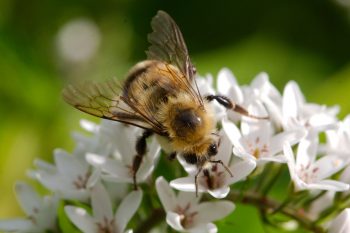The gooseneck loosestrife (Lysimachia clethroides) is in bloom and that generally means I have an opportunity to photograph common eastern bumblebees (Bombus impatiens) like this one. I don’t recommend planting loosestrife unless you really enjoy digging up plants where they appear throughout your garden. It can easily get ahead of you. We sometimes joke about planting two aggressive plants in a container and waiting to see which comes out on top. This has got to be a contender. It does have nice flowers, though, and its attractiveness to bees speaks well of it. Nevertheless, if I could get rid of all we had, I wouldn’t think twice about it.
Tagged With: Loosestrife
Eastern Bumblebee (Bombus impatiens)
Eastern Bumble Bee
I went out looking for pictures as usual this afternoon, when I got home from work. There is Campanula in bloom in the yard, and I took some pictures of those flowers. They don’t tend to come out the same color in photographs as they are in real life. Not entirely sure why. Then I moved over to the gooseneck loosestrife (Lysimachia clethroides), which is a real attraction to the bees. It’s quite invasive and I really would recommend against planting it in the strongest language, but if you already have it, you might as well enjoy the bees. There were a few honey bees but mostly it was the common eastern bumble bees (Bombus impatiens) that were moving quickly from flower to flower.
Common Eastern Bumble Bee (Bombus impatiens)
Pretty much all the flowers in our garden are attractive to insects. I suppose that makes sense, because that’s what flowers are supposed to do, in order to get the insects to (inadvertently) pollinate the flowers. It’s interesting to me, though, that some flowers are attractive to many different insects but some seem to attract a specific subset. Yesterday, I was looking at the Monarda (bee balm) and noticed that the large bees were almost exclusively carpenter bees (Xylocopa virginica). Today I was looking at the gooseneck loosestrife (Lysimachia clethroides) shown here and the large bees were exclusively common eastern bumble bees (Bombus impatiens). Just interesting, that’s all.
On a mostly unrelated note, I really, really don’t recommend you plant any Lysimachia species in your garden. The bees love it, but there are other things they like that aren’t so overwhelming.



